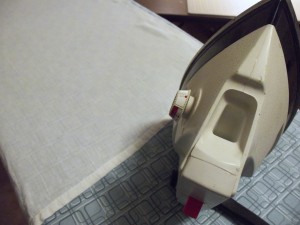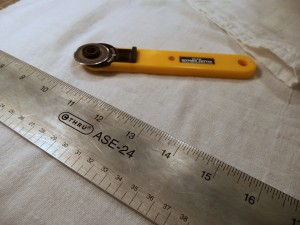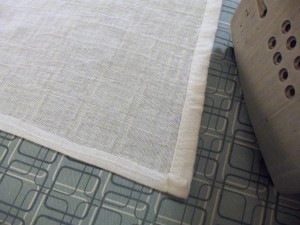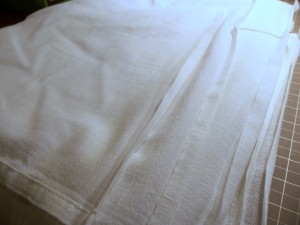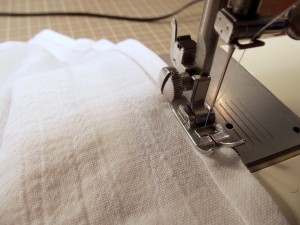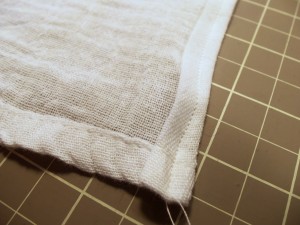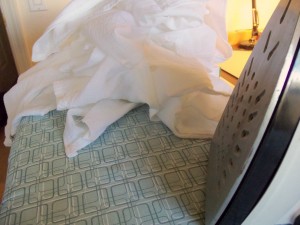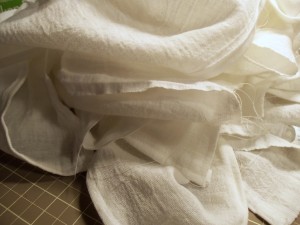I use a lot of paper towels. I dare say I use too many paper towels. Possibly my biggest use for paper towels is food prep: washing a new batch of grapes, cleaning farm-fresh eggs, prepping veggies for a salad, making a PB&J for Stuart’s lunch, etc.
I don’t want to use regular kitchen towels. They’re too bulky and expensive, and are likely to get stained by berries, radishes, and other colorful foods. A few times, I’ve looked online for alternatives. The leading idea are these types of DIY reusables. They’re absolutely adorable. However, these are also bulky and time consuming. I wanted something I could whip out a lot of very quickly and fill my hamper slowly.
One day at Sam’s Club, I came across flour sack towels. Well, duh! They’re perfect! Thin, light, bleachable, quick drying, cotton, and cheap. I used them as-is for a couple weeks to decide how I wanted to cut them, and decided on quarters (cut in half horizontally then vertically). I’ll leave a few whole in the linen cabinet for big jobs, like processing a head of leaf lettuce.
Here’s some photos of what I did. If you sew, this is pretty intuitively obvious. If you don’t this is an excellent way to learn and practice! If I do any more, I may consider doing a rolled hem (I just invested in a rolled hem foot) to save time and ironing.
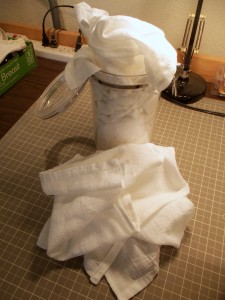
For now, I’m stuffing them in a spare canister so they stay clean. This will sit on my kitchen counter. Later, I may make a plastic bag stuffer to store them in so I can easily pull one out when I need it.
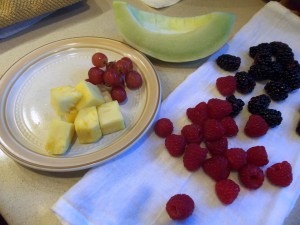
Action shot! Every evening we walk the dogs and have “tea time” while watching the sunset. Tea time involves lots of fruit, and tea of course.
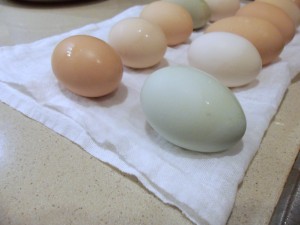
Action shot! Every couple weeks I get a couple dozen eggs from a friend who raises chickens. I wash and sanitize them and store them in the fridge.
I haven’t totally eliminated paper towels, but I have significantly reduced the number I use. After using one, I toss the towel over a chair to dry out, and since they’re thin and Arizona’s air is dry, they dry out quickly. If I used it for a “clean” purpose (like setting washed veggies on), I’ll go ahead and reuse the same towel, and pitch it in the hamper at the end of the day.
If you like this idea, I think this 20 minute grocery bag holder fat quarter project would make an excellent dispenser for these towels. For my house in dusty Arizona, I’d probably devise a drawstring or flap closure for the top.

